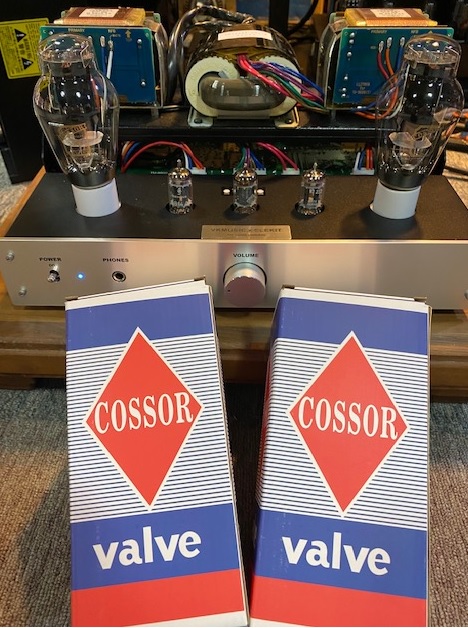Capacitors: A Field Guide to Types and Habitats by Harry Bissell
A capacitor stores a direct current electrical charge. It will pass an AC waveform and block a DC level. It consists in simple form of two parallel conductive plates separated by an insulating material called a Dielectric. The IDEAL capacitor would have infinite ability to block DC (infinite resistance), would have zero series resistance, infinite voltage handling ability, and zero series inductance, and zero temperature coefficient.
Dielectric Strength: The ability of the dielectric to withstand a certain voltage without an arc or short circuit occurring. The higher the dielectric strength, the greater the voltage the cap can be used for.
Dielectric Absorption: An effect where some of the charge stored in a capacitor does not immediately return after discharge, but slowly leaks back at a later time. Some dielectric materials have a kind of sponge effect. Even after you wring the water out of a sponge, it stays wet for some time after. Dielectric Absorption is not a desirable characteristic.
Equivalent Series Resistance (ESR): All practical capacitors have some resistance in series with them because of the lead wires, materials, etc. Low ESR is a desirable characteristic.
Self (series) Inductance: Practical capacitors have some inductance due to the construction techniques used. The minimum inductance would be the same as a single conductor (wire) the same length as the capacitor. Often this value is much higher. With an inductor in series with the cap, there is a series resonant circuit formed. The capacitor will resonate or "ring" at this frequency. Series inductance is not a desirable characteristic. The lowest series inductance caps are usually surface mount ceramic and tantalum types.
Temperature Coefficient: Practical capacitors vary somewhat with changing temperature. Some vary only a slight amount, some a great deal. The temperature coefficient (change in capacitance vs change in temperature) is not always linear.
Polarity: Capacitors that may be safely operated with only one DC polarity are called "polar" Capacitors which can be operated without regard to polarity are "non-polar". Sometimes "polar" caps are combined in special ways to allow a limited ability to cope with revering polarity are called "bipolar"
Ripple Current: The amount of AC current a capacitor can withstand and how often it can withstand it. Not all capacitors are rated for ripple current. This spec is mostly applied to capacitors that deal with AC currents, or DC caps with large AC components (often found in switch mode power supplies, and industrial equipment such as motor drives etc.).
Dielectric Materials: Most capacitors are named after the material used for their dielectric.
Air: The original dielectric material. Old time radio receivers used variable capacitors made of stacks of parallel plates, with air between them. Air is a good dielectric, which varies only slightly with humidity and airborne particles. Air dielectric caps are impractical for values beyond a few hundred picofarads because of their increasing size. Air caps are nonpolar.
Ceramic Monolithic: Ceramic materials make a good dielectric. They can be used for values from low picofarads up to usually around one microfarad. The small values are usually "monolithic", they are made of a single dielectric (usually disc shaped) with metal plated on both sides of the disk, and leads attached. They are also rated by temperature coefficient.
COG or NPO (negative-positive zero) capacitors are the most stable with temperature, but usually are available only in the picofarad range. They are larger for a given capacitance value. There are special temperature coefficient caps for compensation of circuits. These are rare.
X7R capacitors have a greater temperature coefficient, but are available in larger values. They are smaller in size than the NPO. The tempco is not linear and hard to adjust for, but the values are usually plus/minus a few percent from 0-100 degrees Celsius.
Z5U capacitors give the largest values in the smallest size package. The tempco is terrible, often falling to -50% of the value at -20 degrees and +100 degrees Celsius (relative to 25C). Use only for non-critical applications like power supply bypassing.
Ceramic Stacked: There are capacitors that are manufactured by paralleling several monolithic caps in a single package. They have larger values than a disk of similar ratings. The performance is still related to the dielectric material, they could be good or poor in tempco and voltage rating.
Ceramic (in general): For small values and high voltages ceramic caps are hard to beat. They are usually quite low in self (series) inductance, and ESR is not usually an issue. Be aware of their temperature coefficients. Some ceramic materials exhibit some piezoelectric effects, they can be electrically sensitive to vibration and shock. Most ceramics have low dielectric absorption. Ceramic caps are as a rule "nonpolar"
Mica: A very good, very stable dielectric made of the mineral Mica, with plated or deposited plates on either side (often silver, hence the name "silvered mica") These are a better performer than the ceramic caps in the NPO series. Usually mica is not practical in values larger than picofarads. Voltage ratings range into the kilovolts. Mica caps are nonpolar.
Tantalum: A dielectric capable of giving very high capacitance in a very small space. Tantalum caps are made of two constructions, Wet and Dry. Wet tantalum caps have a liquid electrolyte which causes the "dielectric" to be formed. They have been almost completely replaced by "Dry" tantalums. Dry tantalums use a spherical powered tantalum material with a dielectric coating on the outside. They are "sintered" together to form an almost solid material with very high capacitance value per unit volume. They have reasonably low self inductance and very low ESR.
Warning: Tantalum caps are RABIDLY polar. Reversing the DC polarity even for a brief period of time will cause them to heat and self-destruct. They are most common in low voltages and values below a few microfarads. High voltages and large (>5-10uF) values get very expensive. Their low ESR and self-inductance makes them perfectly suited to power supply bypass duties. Leakage current is usually very low, much better than electrolytics. They should be avoided in audio coupling (bipolar) circuits.
Electrolytic: Electrolytic caps are named for the chemicals that cause the dielectric to exist. Electrolytic caps have plates wound from a long, thin strip of aluminum foil. The dielectric is a thin (several atoms thick) coating of aluminum oxide (an excellent insulator). The aluminum oxide is formed by a chemical reaction between the electrolyte and the aluminum, in the presence of an electric field. This formed dielectric gives the capacitors some unique advantages and disadvantages. Electrolytic caps have very large capacitances per unit space, since the dielectric is so thin. The dielectric can tailored to allow voltages up to about 450 VDC, the upper limit for electrolytic caps. The disadvantages of the electrolytic come from the electrolyte, and how the dielectric is formed. The electrolyte will dry up in time, causing the capacitors to gradually decrease in capacitance. Pushing the capacitor beyond its ratings (either voltage, polarity, or ripple current) will increase the pressure in the cap until it either vents (and loses electrolyte) or explodes. The other problem is that if the electrolytic cap is not used for a long time, the dielectric becomes thinner, decreasing the voltage it can withstand. The dielectric needs an electric field (charge) in order to maintain its strength. Electrolytics that have been unused (either in storage or in unused equipment) can have their dielectric layers restored by slowly applying increasing levels of DC voltage. The procedure can take days. Electrolytics suffer from accelerated aging at elevated temperatures. A rule of thumb is that their life is cut in half for each 10 degree Celsius rise above ambient (25C). For all these reasons, electrolytics have a limited life and the user may expect to replace them at some time in the future. Excess hum on a power supply, unstable rolling picture on a monitor are often signs of an electrolytic nearing the end of its useful life. Electrolytic capacitors have a substantial amount of leakage and Dielectric Absorption. This can be a problem in timing circuits, and often limits their use. Some designs (like the 555 timer) minimize these faults by operating the capacitor at voltages where this is less of a problem. The temperature stability of electrolytics is poor and seldom specified
Polar Electrolytics: The most common variety of electrolytic capacitor. These are available in sizes from about 1uF up to fractions of a Farad. Voltage ratings exist from about 5 volts to 450 VDC. There are special varieties that have extended performance ratings, usually specified for higher temperatures, higher ripple currents, lower ESR, and enhanced reliability. All these ratings usually result in a physically larger component. There are special "sealed" electrolytics for timing applications, but they are rare.
Bi-polar Electrolytics: These are a special variety of electrolytic capacitor that are used in applications that have mixed polarity, such as audio coupling applications. Physically, they are made of two polar electrolytics connected in series at their negative terminals. They are usually twice as large as a polar electrolytic for the same voltage and capacitance value. Common uses are in "economy" grade speaker crossovers.
Supercaps (battery): These are electrolytic capacitors that are specialized for long discharge times with very low current loads. They are used for memory backup applications in place of Ni-Cad or Lithium batteries.
The major use for electrolytic capacitors is for power supply filtering and bypassing. Minor uses are for audio coupling in unipolar operation (where one terminal is always more positive than another), non-critical timing applications.
Film Capacitors: Film capacitors are the most often misunderstood members of the capacitor family. They are named after the material used as the dielectric. They come in two physical varieties, Film and Foil construction, and Metallized film construction. They are available in values from around .0005uF to several microfarads, and voltages from around 10VDC to several thousand VDC. For special applications sizes up to several thousand microfarads are available, but they are very large and very expensive. Most film caps have good to very good temperature stability, most are low in dielectric absorption. As a rule they are Non-Polar capacitors and have good AC response. Self inductance ranges from low to high, depending on the geometry of the construction. In their simplest form, they are constructed from two pieces of foil separated by a "film" of the dielectric material. This is called Film and Foil construction, and is larger and more rugged in most cases. Some film caps have a metallization layer, usually aluminum, deposited on both sides of the film. This is called Metallized Film, and is usually smaller and more expensive. Both types have similar performance.
Polyester (Mylar) Film: The most common dielectric material in use. It is low in cost and can be found in Film and Foil are Metallized varieties. Common Voltage ranges go from about 50VDC to 200VDC (up to 1000VDC) Mylar suffers from Dielectric Absorption (.20%), which makes it unsuitable for applications such as VCO timing capacitors, and Sample and Hold applications. Polyester caps do not have a linear temperature coefficient, they get progressively higher in capacitance in capacitance at elevated temperatures, and progressively lower at lower temperatures. The overall shape of the curve is similar to a horizontal letter "S". Between 25 - 85 degrees Celsius they have a rising temperature coefficient. They are useful for audio coupling, semi-critical timing circuits, tone controls, general uses. Temperature range is to 125 degrees Celsius.
Polystyrene Film: The Holy Grail of Film Capacitors, polystyrene has the most desirable electrical characteristics. With temperature coefficients as low as 30-40ppm (special) and typically less than 120ppm (standard), they have excellent linearity of temperature coefficient over the entire temperature range most equipment ever sees on this planet. Dielectric Absorption (.02%) is the lowest found in any capacitor variety. This makes the polystyrene cap the first choice for all critical timing circuits, such as VCO and VCF timings, and for all Sample / Hold circuits. Polystyrene caps cannot tolerate high temperatures (85 degrees Celsius max.), so they are not available in the metallized variety. Careless soldering can destroy them easily, and they are often poorly suited to automated production equipment. There is a persistent rumor that the only manufacturer in the world that made capacitor grade polystyrene film has ceased production. There is still stock in most values on the market, but people are well advised to save a few for top of the line circuits. There are some new polycarbonate caps which will approach the performance of polystyrene.
Polypropylene Film: Polypropylene capacitors are often used in place of polystyrene. Slightly larger than polyester (Mylar), they are superior electrically and slightly larger in size. They have a linear, negative temperature coefficient of -150ppm (and special -250ppm for compensation of coils in filter applications). If the negative temperature coefficient is desirable, they are used in place of polystyrene. Dielectric Absorption is .02%, and the temperature range is up to 105 degrees Celsius max.
Polycarbonate Film: Polycarbonate capacitors are another good choice for polystyrene replacement. Tempco and Temperature Stability are not as good as polystyrene. They are linear over a limited temperature range (25-85 degrees Celsius). Beyond this range they are not linear (similar to polyester capacitors). Polycarbonate caps withstand much higher temperatures (125 degrees Celsius max.) than polystyrene, so then can be made in Metallized Film construction. Voltage ranges are available to several thousand volts. These caps are best suited for critical coupling and timing applications, and can be used wherever Polystyrene is the preferred choice, with a slight decrease in performance. Polycarbonate caps have a moderate amount of moisture sensitivity, and Dielectric Absorption is around .08%. Polycarbonate caps are about 12% larger than polyester (Mylar).
Polysulfone Film: The same specs as polycarbonate, but with even higher temperature ratings. These are used where high temperature performance is mandated (150 degrees Celsius max.) and are rarely used for general purposes. They have a reasonably linear temperature coefficient from 25 degrees Celsius and above, but fall slightly at lower temperatures. Polysulfone caps have a slight amount of moisture sensitivity, and Dielectric Absorption is around .08%.
Teflon Film: Teflon performs as well as polystyrene in every regard, and is good for high temperatures as well. They are twice the size of a polyester (Mylar) capacitor, and high price makes their use uncommon for all but the most mission-critical applications (read aerospace). The difficulty in making anything adhere to the film makes metallization impractical. Teflon is impervious to moisture and has dielectric absorption of around .02%
Applications Notes:
Capacitor "Self Inductance"
The inductance of a practical capacitor limits the frequency range that it can be used for. At some frequency, the inductance of the capacitor will form a series resonant circuit. At this frequency the capacitor is useless as a filter. The series inductance of the capacitor also raises the impedance, limiting its ability to pass AC current. For this reason, DC power supplies often use a parallel combination of capacitors. For low frequency filtering (60-120Hz) a large value of capacitance is necessary. A polar electrolytic of several hundred to several thousand microfarads is the common choice. The large series inductance of this capacitor makes it effective only up to several hundred kilohertz. Above this, the high impedance makes it appear as "not there" to higher frequency components. To extend the frequency range, a small tantalum cap (several uF) is often added. This has much lower series inductance, so it is effective up to the low megahertz. The value can be small, because the lower frequencies are being filtered effectively by the large electrolytic. At even higher frequencies, a small ceramic (.01 to .1uF) is added in series. The same rules apply, the cap can be even smaller because the frequency of interest is even higher. Ceramic caps for decoupling use can be almost any variety (X7R, Z5U etc.) This will make a power supply filter that performs equally well at eliminating AC line hum, radio stations, microprocessor noise, etc. Remember, the filter not only stops noise from riding into your circuit, it stops your noise from reaching other circuits (yours, your neighbors' etc).
The length of traces and wire that separate individual components on a printed circuit board or a system also have "series inductance". This means that if there is a sudden, local demand for current, the voltage at that point in the circuit will drop until the current flow makes it through the current limiting inductance. For this reason, capacitors are placed very near the power terminals of active components. This limits the series inductance, so a small capacitor can act as a filter for local noise, as well as a small current reservoir. These are known as decoupling capacitors, because the make the local node act independently of (or decoupled from) the rest of the circuit. The inductance of the wiring is usually small, so the main electrolytic filter caps are still able to handle the low frequencies. At the chip level, a small tantalum or electrolytic (1-10uF) in series with a ceramic (.01-.1uF) is usually more than enough. Lack of decoupling can cause circuits to perform badly or sometimes, not to work at all. The opposite of decoupling is "coupling", meaning that there are unintended connections and interactions between circuit functions.
Coupling Capacitors:
Capacitors are often used to block different DC voltages in successive stages of audio equipment. This function requires the capacitor to have low leakage, low to moderate self inductance, and to be able to handle the AC and DC levels involved. If the DC level of one stage is ALWAYS higher than another, a polar capacitor (electrolytic) may be used. This is often the case in guitar "stomp boxes" where the input and output are ground referenced, and the circuit runs on a positive supply. If this condition can't be guaranteed, then a Bipolar electrolytic may be used. In all coupling cases, a film capacitor is a superior choice if it is practical to use one. Any film type can usually be used here. In high impedance circuits, a fairly low value coupling capacitor will give good low frequency response. If the impedance is low, however, the electrolytic (polar or bipolar) may be the only choice. Tantalum capacitors are almost always a poor choice for coupling applications. A reversal of polarity for any reason will destroy the capacitor. Electrolytics can stand a little abuse in this regard, but they should not be reverse biased for extended periods of time.
Timing Capacitors:
For all frequency sensitive applications, film caps are the best choice. Polystyrene is the best, followed by polycarbonate, and polyester (Mylar). Mylar capacitors should always be avoided in Sample/Hold and VCO applications, and used with caution in VCF circuits. If the capacitance value is very small then mica or COG/NPO ceramics may be used.
This paper is copyright 1999 by Harry R. Bissell Jr.
harrybissell@prodigy.net It may be reproduced freely if my name stays on it.
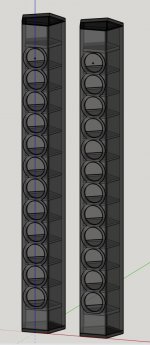
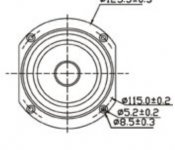

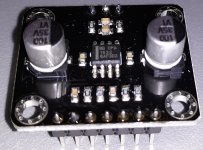
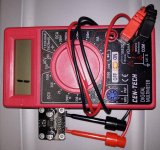
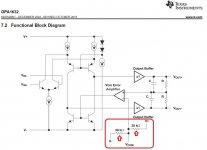
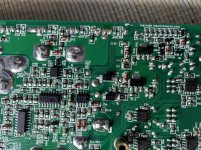

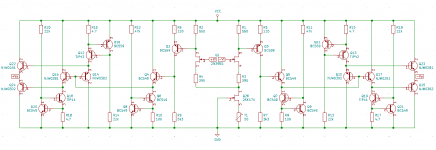
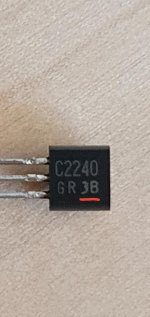
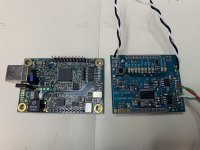
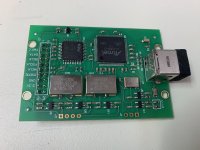

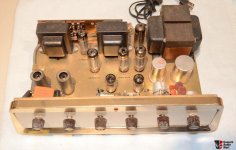

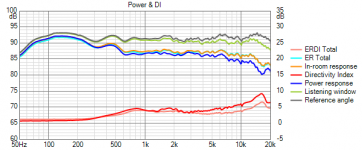
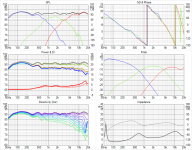
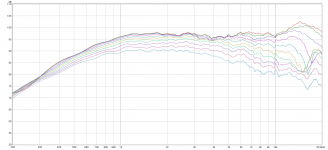
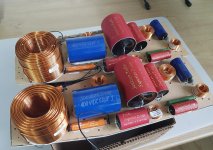
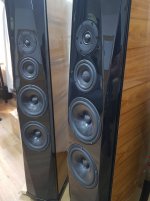
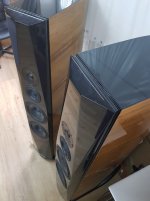
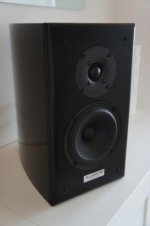

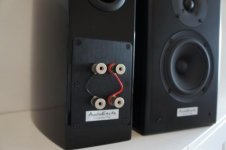
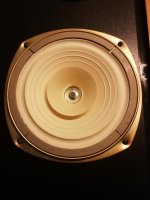
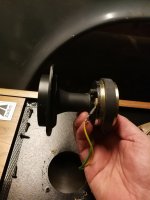

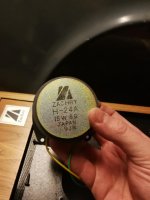
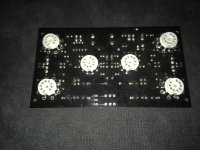
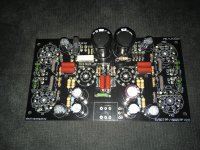
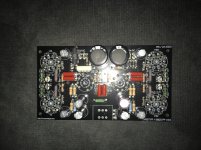
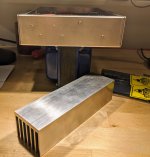
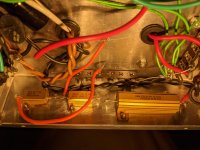
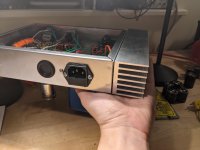
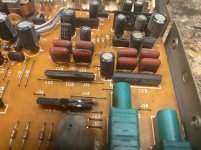
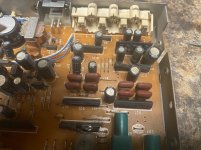
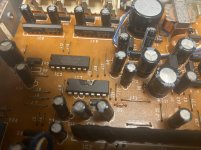
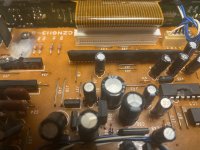
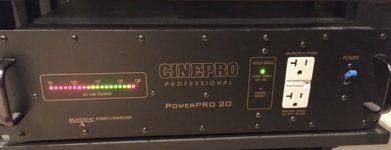
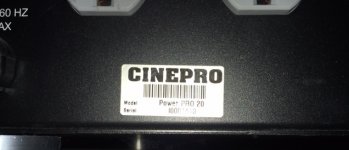
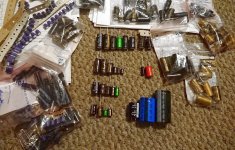
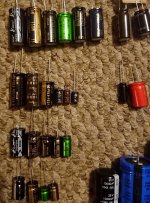
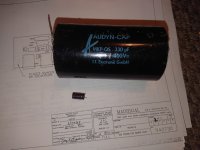
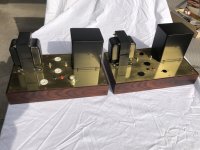
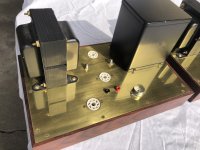
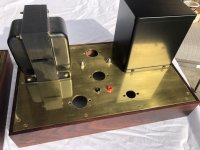
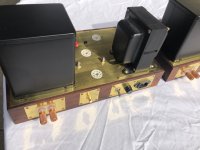
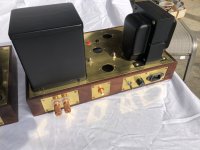
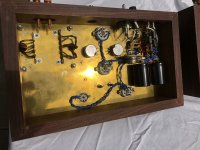
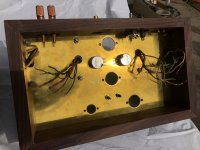
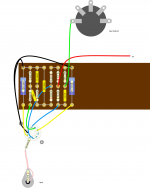

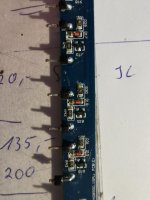
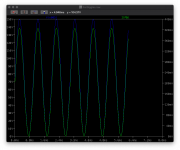
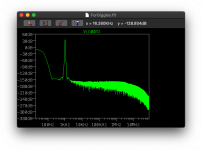
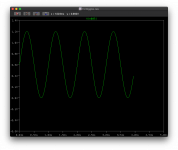
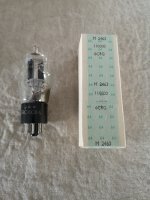
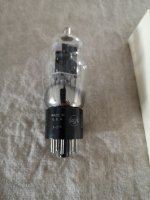
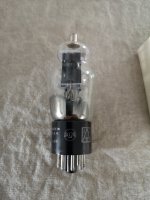
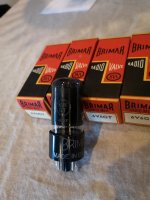
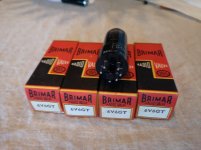
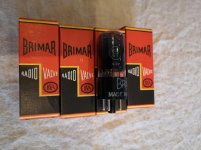
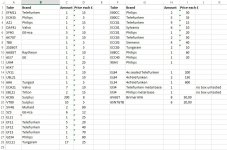
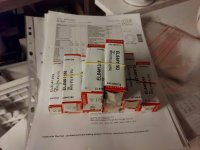
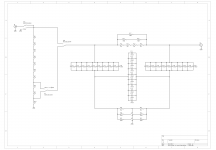
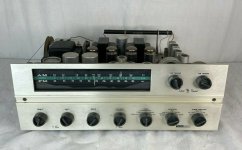
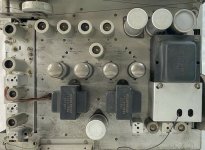
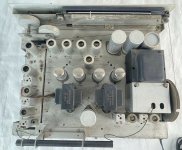
![-[1].jpg](/community/data/attachments/868/868393-84c38f8c65ba85d324acf39791d2e03a.jpg?hash=hMOPjGW6hd)
![krkrear-qxhCXz0G06Er7nGZ39tts1xi05QAB559[1].jpg](/community/data/attachments/868/868399-c997fcee1506219f270d7e078b325cf3.jpg?hash=yZf87hUGIZ)

